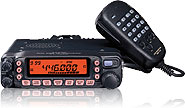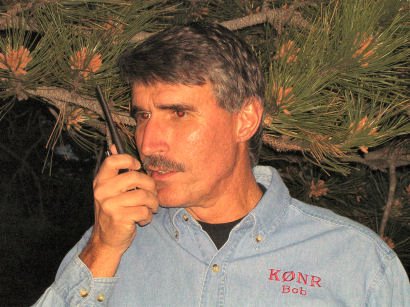VX-2R: Great Little HT

Every so often, a really great product lands in my hands that I really, really appreciate and enjoy. One of these products is the Yaesu VX-2R. The story starts with the Yaesu VX-1R, which was OK for what it was but had a number of not-quite-so-good attributes. Yaesu apparently learned from the VX-1R and fixed the issues when they designed the VX-2R.
This all started when I was looking for the ultimate backpack radio. Basically, I was looking for an HT that was small enough that I would easily toss it into my backpack when loading up for a multiday backpack trip. Anyone that has gone backpacking knows the drill....you get everything you think you need into the pack for a 3-day trip and the pack weighs 423 pounds. At the last minute, you start tossing everything out to make the pack lighter. In a matter of minutes, items that were essential turn into unnecessary ballast that must be cast aside. If you work really hard, you can get the pack down to about 215 pounds and still have everything you need for the next 3 days.
In this situation, I really don't want to carry a heavy radio. I have a Yaesu FT-817 which is a sweet little radio, covering HF through 440 MHz with CW/SSB/FM. This is a fine rig but just too dang heavy for a backpack trip. Worst than that, it consume batteries like a toaster so I'd have to carry 43 pounds of batteries to keep the thing running. OK, that leads me back to a handheld transceiver, commonly know as an HT.
The key features of the ultimate backpack HT are:
- Transceive on the 146 MHz and 440 MHz amateur bands
- Receive NOAA weather frequencies
- Receive FM broadcast stations (for weather and news)
- Wideband receive of national park and US forest service frequencies (typically 168 MHz)
- Transceive on FRS frequencies (462.xxx MHz), emergency use only, of course
The stock antenna is very compact but does not perform that well. It is OK for casual listening but a longer antenna is a must for anything but short range use. The VX-2R uses an SMA connector for the antenna. A good choice is the Diamond SRH77CA which is a 1/4 wavelength on 2M and 1/2 wavelength on 70 cm (about 16 inches long).
A carrying case/holster is another great accessory with this little HT. I use the
Nite Ize Clip Case Universal Holster available from a variety of outdoor shops.
73, Bob K0NR




